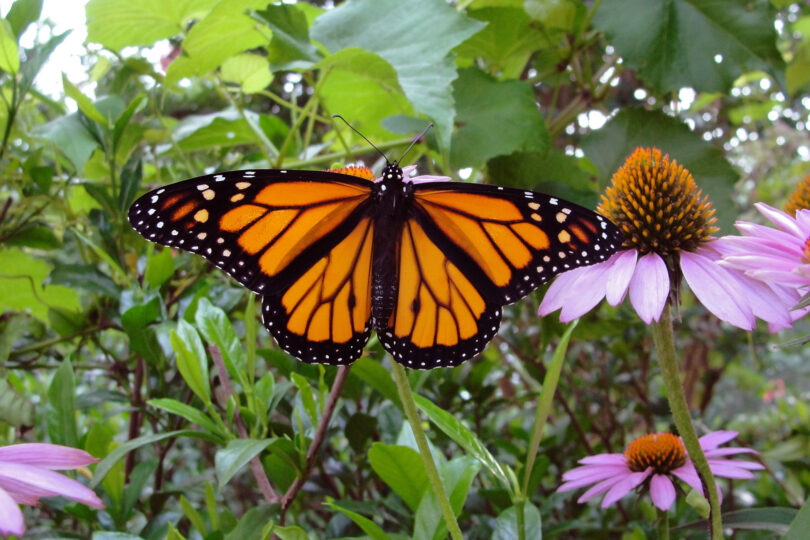2024-10-15 ジョージア大学 (UGA)

The study represents the most detailed and comprehensive picture to date of the health of the monarch fall migration in eastern North America. (Photo courtesy of Pat Davis)
<関連情報>
- https://news.uga.edu/monarch-butterfly-may-not-be-endangered-but-its-migration-is/
- https://www.pnas.org/doi/10.1073/pnas.2410410121
秋の渡りにおけるオオカバマダラ(Danaus plexippus)のねぐらサイズの劇的な減少 Dramatic recent declines in the size of monarch butterfly (Danaus plexippus) roosts during fall migration
Andrew K. Davis, Jordan R. Croy, and William E. Snyder
Proceedings of the National Academy of Sciences Published:October 15, 2024
DOI:https://doi.org/10.1073/pnas.2410410121
Significance
Observations of far fewer overwintering monarch butterflies, alongside apparent rebounds during the summer breeding season, have led to heated debate whether monarchs are truly endangered. We used ~2,600 citizen scientist observations of monarch “roosts”—mass aggregations of fall-migrating monarchs—to assess whether they are struggling to reach Mexico. Positive effects of a warming and greening flyway were overwhelmed by unexplained declines in roost size of up to 80%, increasing all along the path of their arduous southern migration. This suggests that to conserve the migration, people should focus on providing high-quality nectar sources, and avoid planting nonnative milkweeds that foster migration-taxing parasites.
Abstract
The conservation status of monarch butterflies in North America is a topic of intense scrutiny and debate. It is clear that winter colonies in Mexico are declining, yet some recent studies suggest that summer breeding populations are relatively stable and similar to historical abundances. One possible explanation for these discordant patterns is that fall migration success has been recently disrupted. Here, we use a relatively unexplored citizen-scientist dataset on the size of monarch “roosts,” which are resting aggregations on vegetation, to infer changes in monarch abundance along the fall migration route over the last 17 y. We found that the timing of migration remained relatively unchanged while the flyway has generally become warmer and greener. Warmer and greener conditions were associated with larger roosts, yet we found steady, dramatic declines in roost sizes through time that were independent of climate and landscape factors. Roost sizes have declined as much as 80%, with losses increasing from north to south along the migration route. These findings suggest that failure during the fall migration could explain the apparent drop in monarch numbers from summer breeding to overwintering populations. This in turn suggests that conservation efforts that support fall migration success are most needed, such as providing high quality nectar plants along the migration route or limiting the planting of nonnative milkweeds that enhance monarch parasite loads. Overall, it appears the fall migration of monarch butterflies is under imminent threat, even if the species’ overall survival is not.


